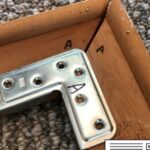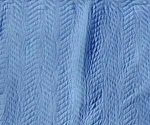Hi Everyone,
Anthony has an excellent (road) trip for you, Oakland to Sonora. Every now and again you have to unstretch a canvas for transport. It’s nothing any of us would relish, but it occasionally has to be done. I once saw an innovation from Stephen J. Kaltenbach where he had a huge painting and designed a removable middle third of the stretcher. The middle section of the two vertical stretchers could be removed and the whole thing could drape over a sonotube for transport, but I digress.
ART HANDLER SIDE HUSTLE
Like many of us Anthony hustles on the side and he shared this one with all of us. We can’t all have big beautiful trucks and vans for moving, he does a great job making due and caring for the work. There are an infinite number of construction methods for building stretchers, he grabs some stills of the hardware for this one, maybe they could be useful for those of you needing a similar solution. He makes a good point about making sure the joints and hardware are marked. Sometimes we move a little too fast and miss the fact that a crate or in this case the stretcher corners are not marked. It’s usually not the end of the world, but it’s a headache to recreate the puzzle.
CANVAS PAINTING CORNERS
The right tools are important, and having spare, well…., everything is always a good idea. I’d love to see how he does his corners. Anthony uses pliers, screwdrivers, one primary staple gun, a backup staple gun, a hammer, and matte knife when stretching and restretching his canvases.
By the way, how many possible ways are there to fasten canvas and its corners??? Anyone on here want to tackle that?
INNOVATIONS IN BLUE PAINTERS TAPE
The blue tape for the J hook is a very fresh take, I’ve never seen this method. I always like seeing something new, especially for such a mundane and ordinary task like tape for a hook. Everyone, please use tape and not pencil, please! And lastly, that bubble is always satisfying, always! Thanks for sharing Anthony! Anthony’s details are below.
FROM ANTHONY:
For this video, I quickly run through some photos and tips of a one-day art handling job, which involved transporting and installation a painting from Oakland to Sonora. The whole process is rapidly shown in a little more than a few minutes, but it in total was about 8 hours from start to finish. In general, the steps included: 1) cleaning with water and a sponge the acrylic painting, removing the canvas from the stretcher bars, wrapping the painting for transport, organizing hardware and tools, driving the artwork and supplies from Oakland to Sonora, reattaching the painting to the stretcher bars, then finally the home installation.
I have worked in the arts for over ten years, and though I work near full time as an archivist, I’m always on the lookout for the next art installation side gig.






